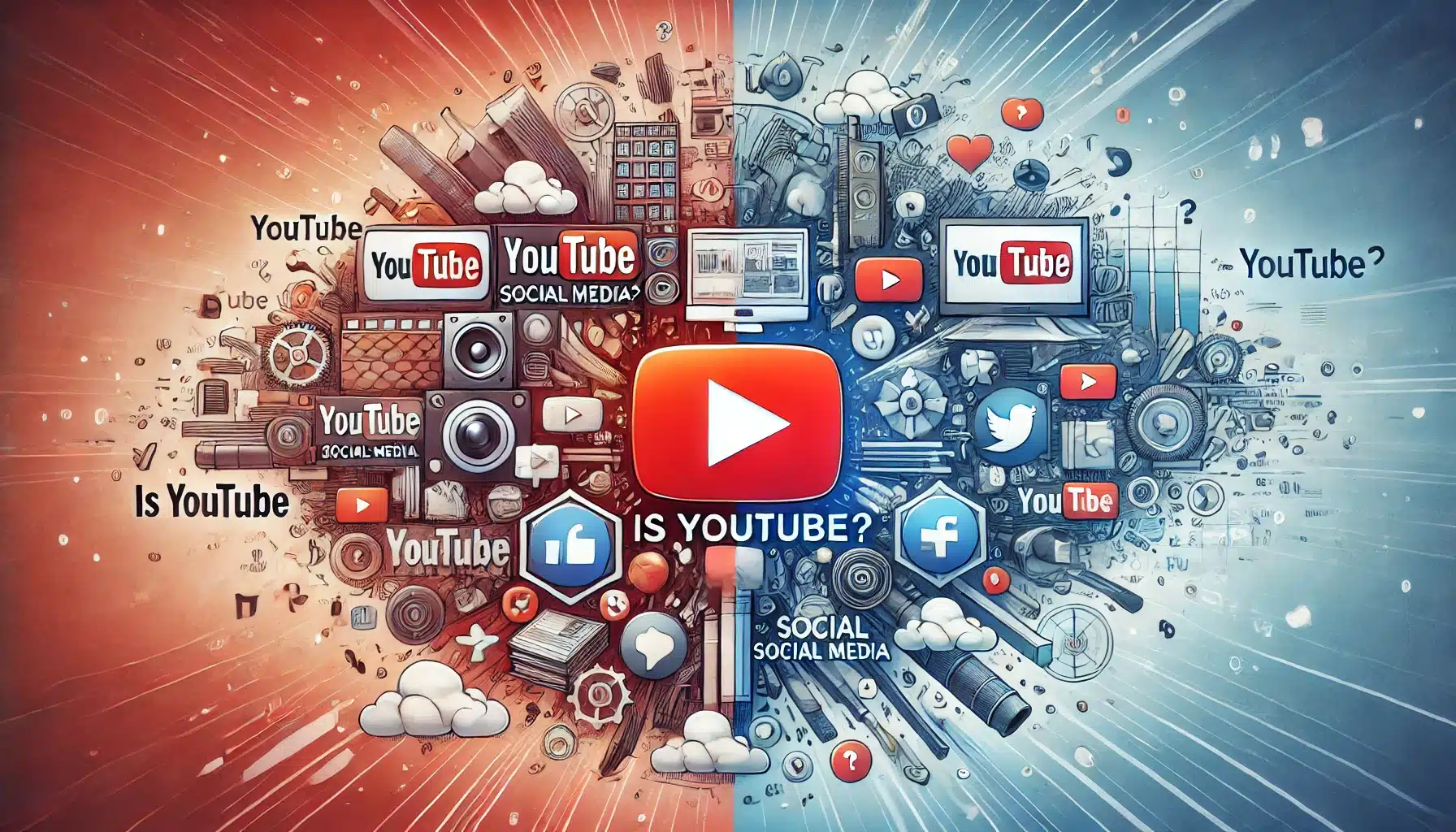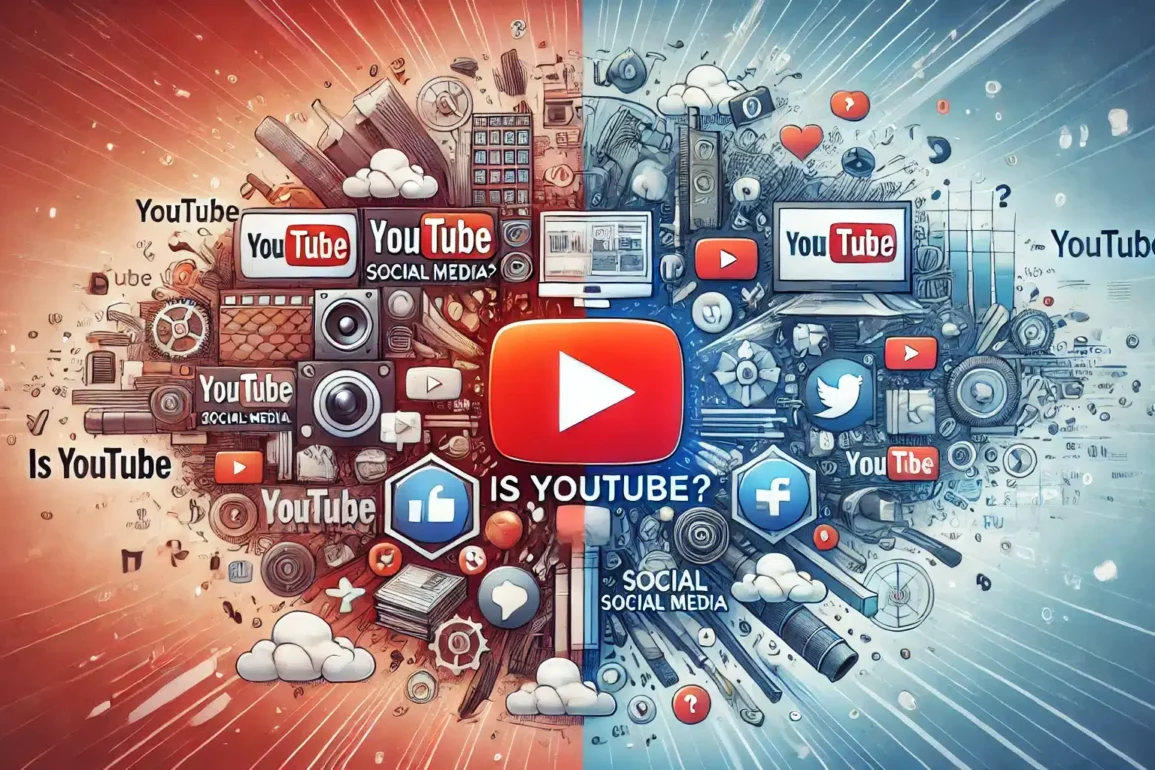
Social media is a digital platform for communication, connection, and content sharing, allowing individuals and businesses to create, interact, and engage with an online community. It encompasses a wide range of applications and websites that facilitate social networking, media sharing, content creation, and discussions across diverse audiences. Platforms like Facebook, Twitter, Instagram, LinkedIn, and TikTok are among the most prominent, each offering unique features tailored to specific types of interaction, such as text posts, photo and video sharing, professional networking, and real-time updates.
At its core, social media enables users to build profiles that represent their identities, interests, and experiences. Users connect with others through friend requests, follows, or group memberships, allowing them to view, react to, and comment on each other’s posts, fostering a sense of community and shared experiences. Content creation is a major aspect of social media, with platforms encouraging users to produce and share personal stories, photos, videos, and opinions. The appeal of user-generated content lies in its immediacy and relatability, often creating authentic moments that resonate with specific communities or broader audiences.
YouTube is a video-sharing platform that has grown to become one of the largest and most influential websites in the world. Founded in February 2005 by three former PayPal employees—Steve Chen, Chad Hurley, and Jawed Karim—YouTube was created as a simple platform where people could upload, share, and view videos. The idea emerged from the founders’ desire to easily share video clips online, which was challenging with the technology available at the time. The first-ever video on YouTube, uploaded by Karim, was a short clip titled “Me at the Zoo,” which marked the beginning of the site’s rapid growth.
By November 2005, YouTube had gained traction, attracting millions of users and quickly becoming a popular destination for sharing everything from personal vlogs to viral content. The platform’s explosive popularity caught the attention of major companies, and in 2006, Google acquired YouTube for $1.65 billion in stock, recognizing its potential to transform media consumption. This acquisition provided YouTube with the resources to scale up its infrastructure and further enhance user experience, making it easier for people worldwide to upload and watch videos.
Over the following years, YouTube expanded its features and began partnering with content creators and media companies. The platform introduced monetization options, allowing creators to earn revenue through ads displayed on their videos, which transformed YouTube into a viable career platform and gave rise to a new generation of digital influencers, known as YouTubers. This monetization model attracted a diverse array of content creators, from comedians and gamers to educators and lifestyle vloggers, leading to a vast ecosystem of content that catered to every possible interest.
As YouTube continued to grow, it became a significant player in global media, rivaling traditional television networks and transforming entertainment, education, and news. The platform introduced live streaming, allowing users to broadcast events in real-time, and launched YouTube Originals, investing in exclusive content from popular creators. By the late 2010s, YouTube also focused on expanding its service offerings with YouTube Premium (formerly YouTube Red) and YouTube Music, catering to users who wanted an ad-free experience and additional music streaming options.
Throughout its history, YouTube has faced challenges, including issues related to content moderation, copyright infringement, and balancing advertiser demands with creator freedom. The platform has continually adapted its policies, implementing stricter guidelines for content and introducing tools to detect copyrighted material, ensuring compliance with legal and brand safety standards. Despite these challenges, YouTube remains one of the most popular platforms globally, with over two billion logged-in users visiting each month.
YouTube’s influence extends far beyond entertainment. It has become a powerful educational resource, a major platform for news and activism, and a critical tool for marketers and businesses. The platform’s evolution from a small startup to a central player in digital media reflects its adaptability and the ongoing demand for accessible, user-generated video content in an increasingly digital world.
YouTube is widely regarded as a form of social media due to its emphasis on user-generated content, interaction, and community building. While it is primarily known as a video-sharing platform, YouTube functions as a dynamic social environment where users create, share, and engage with content in ways that are deeply social and interactive. It enables anyone with internet access to upload videos, making it a platform where individuals and brands alike can share ideas, stories, tutorials, entertainment, and much more with a global audience. This open access to content creation and sharing is a defining feature of social media, and YouTube exemplifies it on a massive scale.
YouTube’s social nature is evident in the ways users can engage with content and each other. Every video has a comments section where viewers can share their thoughts, feedback, and reactions, often sparking discussions among users. This creates a forum-like environment beneath each video where people can exchange ideas and opinions, ask questions, and even debate issues raised in the content. These interactions foster a sense of community, especially for channels that attract regular viewers who become familiar with each other and the creator. The ability to like, dislike, and respond to comments further enhances the social nature of YouTube, allowing viewers to signal their agreement, support, or criticism of both the content and the community’s responses to it.
Subscribers play a significant role in YouTube’s social ecosystem. When users subscribe to a channel, they essentially follow the creator’s content, much like following a profile on Instagram or Twitter. This subscription feature allows users to receive updates about new videos, stay engaged with their favorite creators, and join dedicated fan communities centered around shared interests. The subscription model has helped YouTube cultivate unique communities around various content types, from gaming and vlogging to educational tutorials and lifestyle advice. Many YouTubers actively foster this community by addressing their subscribers directly in videos, responding to comments, and even creating community posts and live streams to interact with their audience in real-time.
YouTube’s recommendation algorithms add another layer of social engagement by creating a personalized viewing experience. Based on a user’s viewing history, likes, comments, and subscriptions, YouTube suggests videos tailored to individual interests, encouraging further exploration and interaction. This personalization helps users discover new content that aligns with their interests, while also promoting engagement with specific communities or trends. YouTube’s algorithms amplify popular and trending videos, often propelling creators into visibility and building fan bases around them, much like viral content on other social media platforms.
Additionally, YouTube has introduced features that further align it with traditional social media platforms, such as live streaming, Stories, and community posts. Live streaming allows creators to broadcast in real-time, engaging with viewers through direct comments and responses, creating an immersive, interactive experience. Stories and community posts provide more casual, quick updates from creators, allowing them to share glimpses of their day-to-day lives or make announcements outside of their regular video uploads. These features make YouTube more dynamic and allow for more frequent interaction, similar to platforms like Instagram and Snapchat, where stories and posts provide a mix of content types to keep audiences engaged.
Another significant social aspect of YouTube is the platform’s culture of collaboration and influencer-driven content. YouTubers often collaborate with one another, appearing in each other’s videos to reach broader audiences and create cross-community engagement. These collaborations mimic the interconnected nature of social media, where influencers and creators can interact across platforms to build joint audiences. Influencer culture on YouTube is also very strong, with many YouTubers amassing large followings and influencing trends, consumer behavior, and even social attitudes. These influencers engage in brand partnerships, launch merchandise, and sometimes even impact mainstream media, demonstrating the platform’s power in shaping public opinion and culture.
The presence of user feedback and metrics—such as views, likes, dislikes, and shares—adds to YouTube’s identity as a social media platform. These metrics not only give creators insight into how well their content is received but also allow viewers to engage with videos in measurable ways, making the platform more interactive. Viewers can share videos on other social media platforms, increasing visibility and promoting viral content. This interactivity through measurable engagement is key to YouTube’s role as a social media platform, as it allows users to actively shape the platform’s content landscape by promoting videos they enjoy and influencing which types of content gain prominence.
In recent years, YouTube has expanded its role beyond just entertainment by becoming a platform for education, news, activism, and community-building around various causes. People use YouTube to learn new skills, follow current events, raise awareness, and mobilize around social issues. This functionality positions YouTube as more than just a content hub; it has become a powerful tool for social change, advocacy, and public discourse, mirroring the societal impact seen on other major social media platforms like Facebook and Twitter.
Overall, YouTube’s combination of content sharing, personalized recommendations, community interaction, influencer culture, and real-time engagement features demonstrates that it operates as a social media platform. It goes beyond traditional media by giving users a voice, fostering connections, and creating spaces for diverse communities, while also influencing culture, consumer trends, and public opinion. In essence, YouTube serves not only as a source of entertainment and information but also as a vibrant social ecosystem that connects millions of people worldwide.
This post was originally published on this site be sure to check out more of their content








